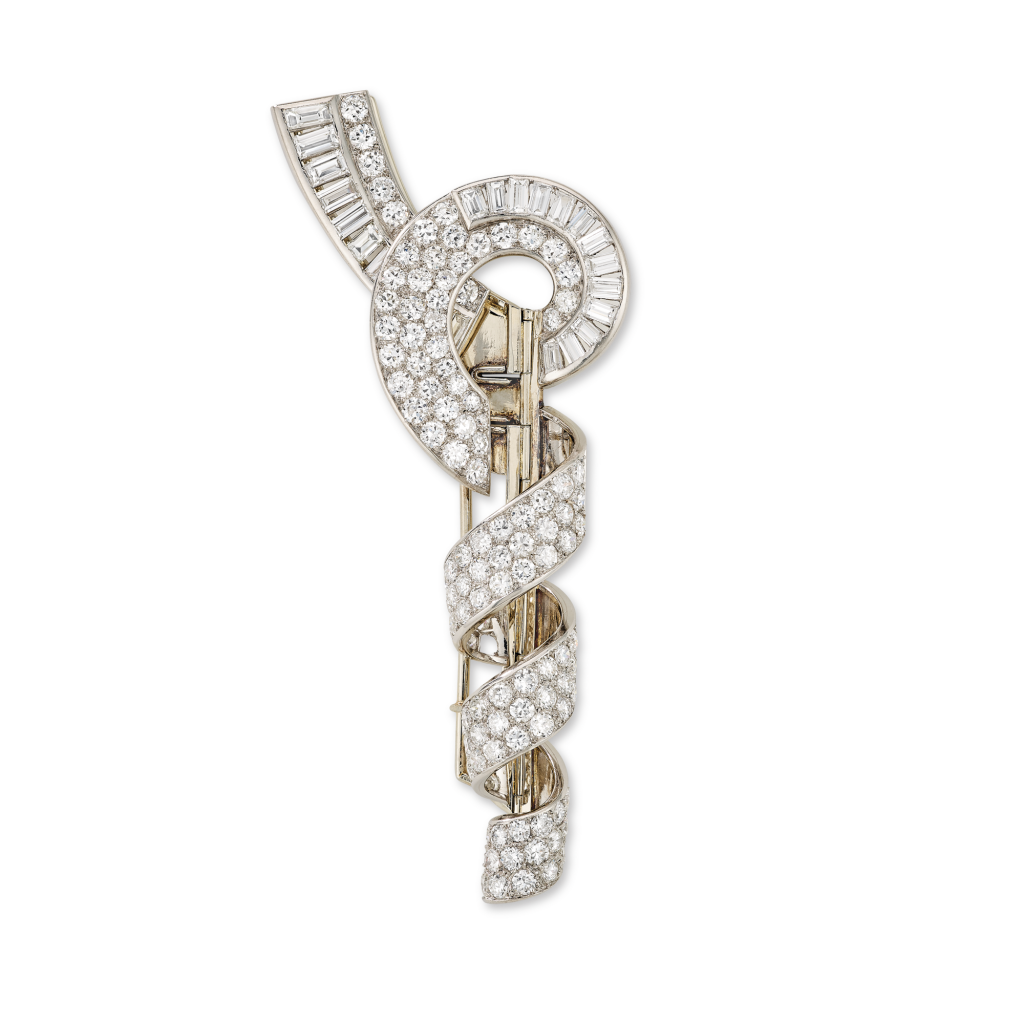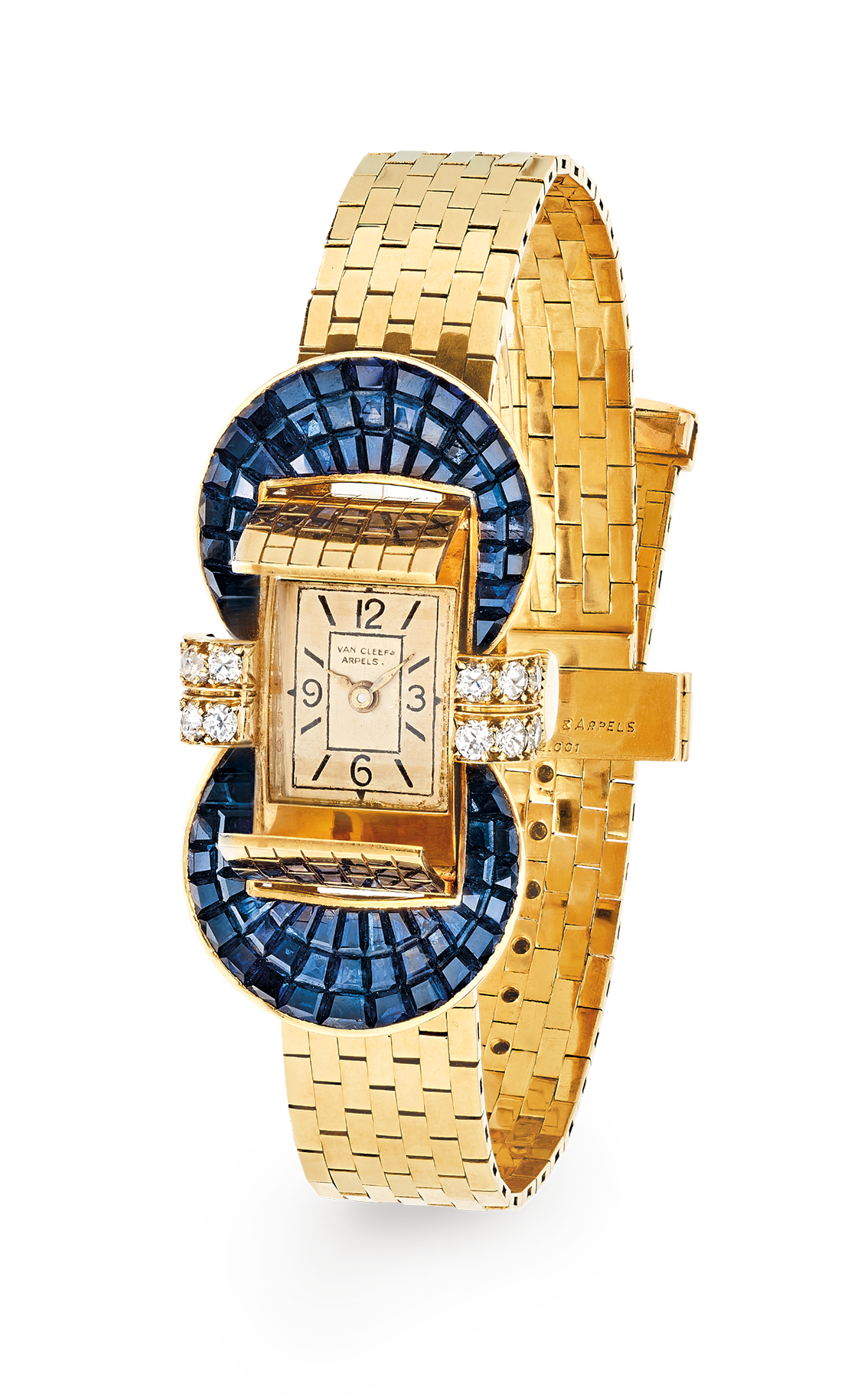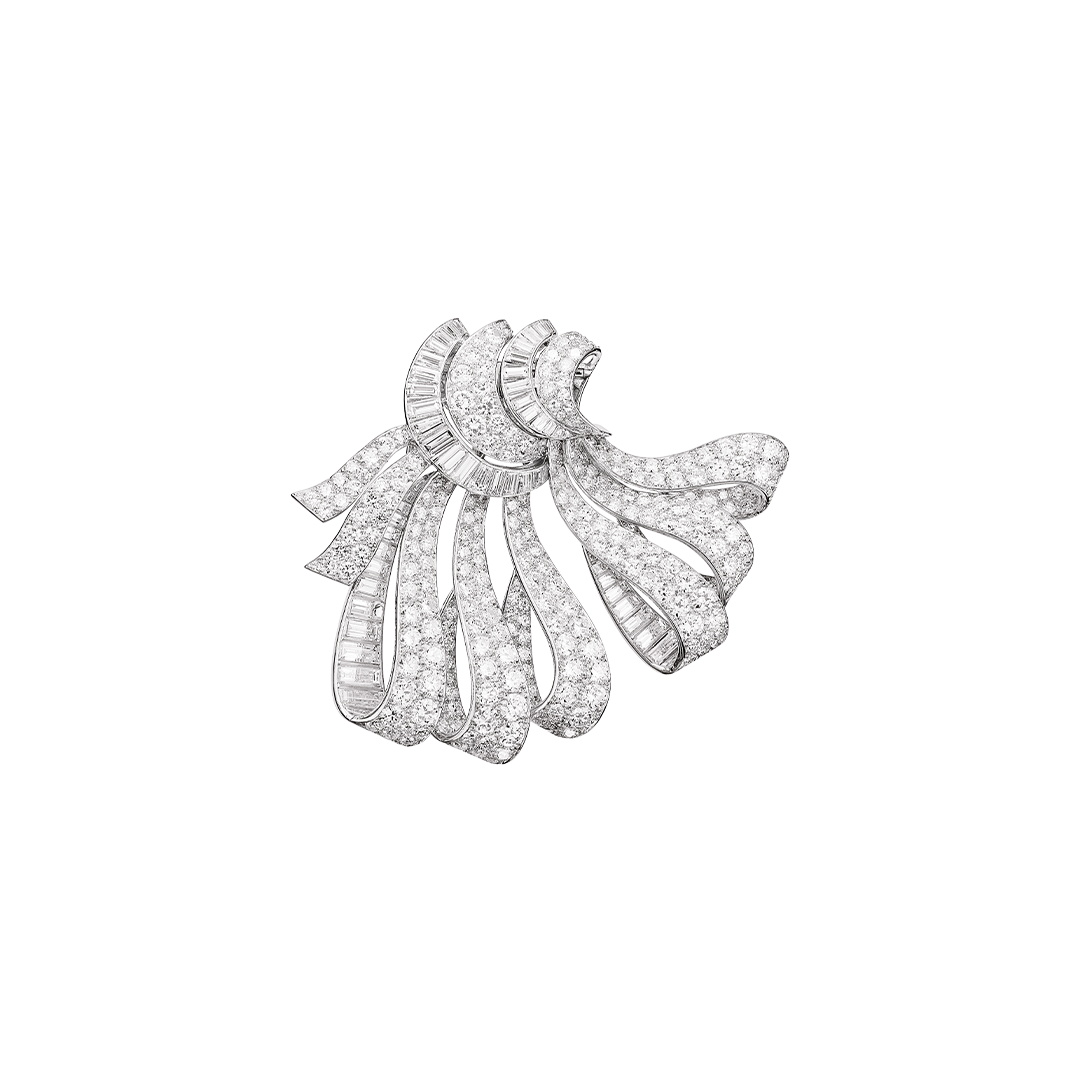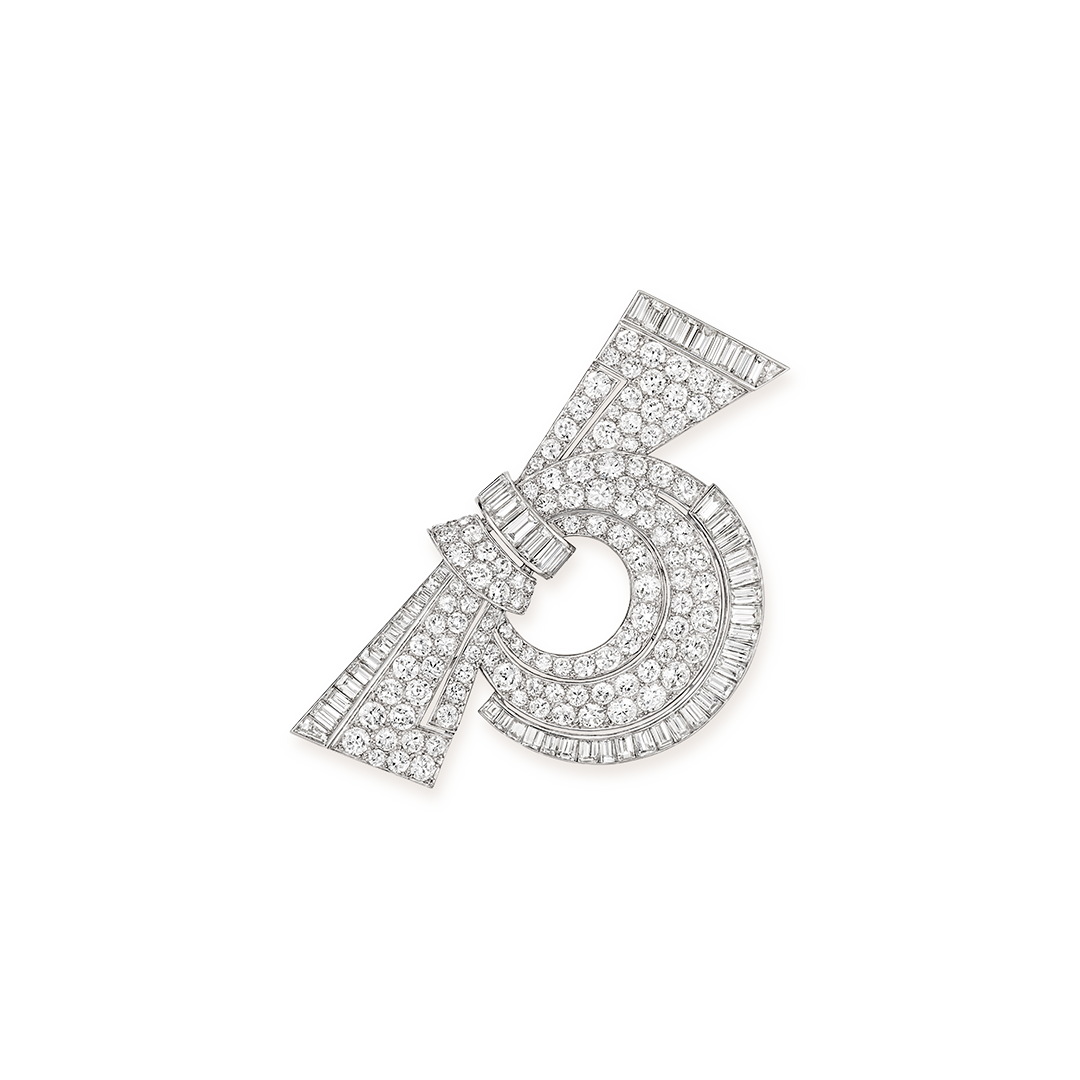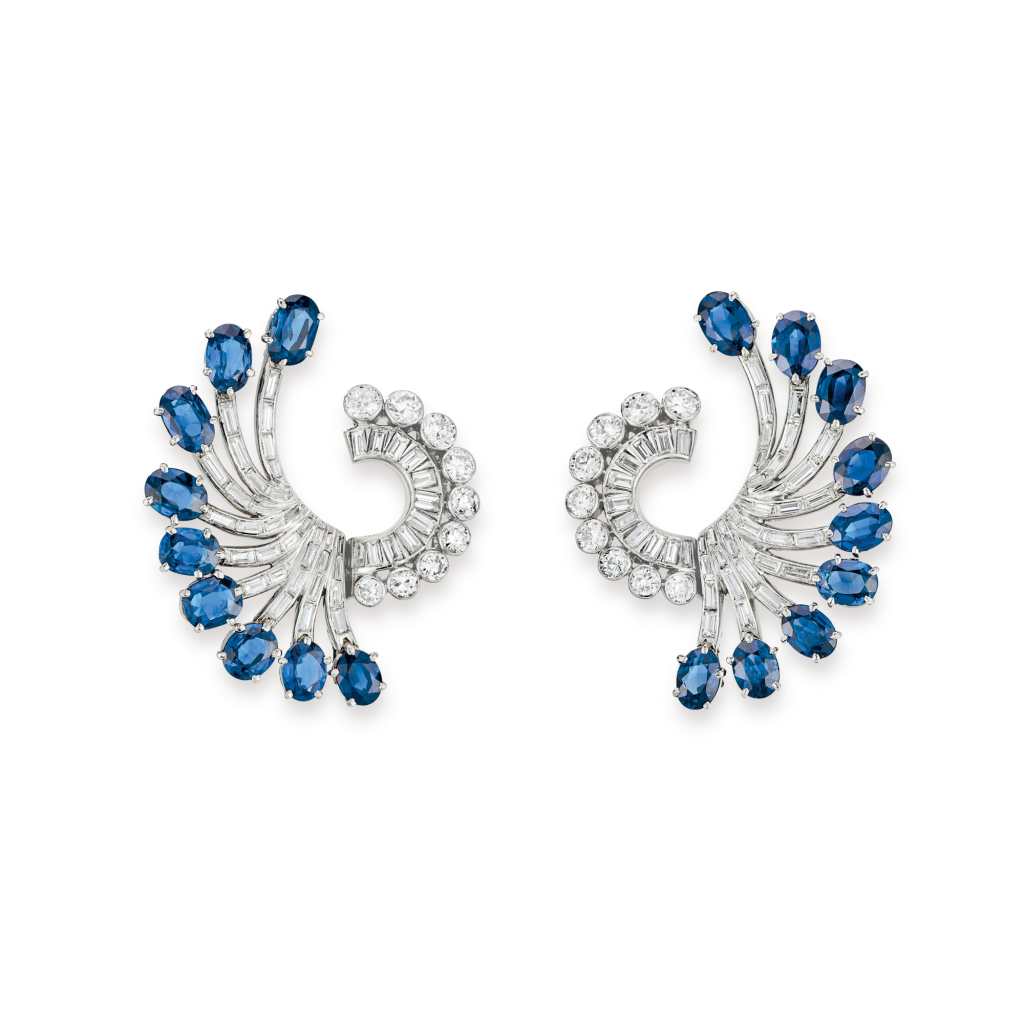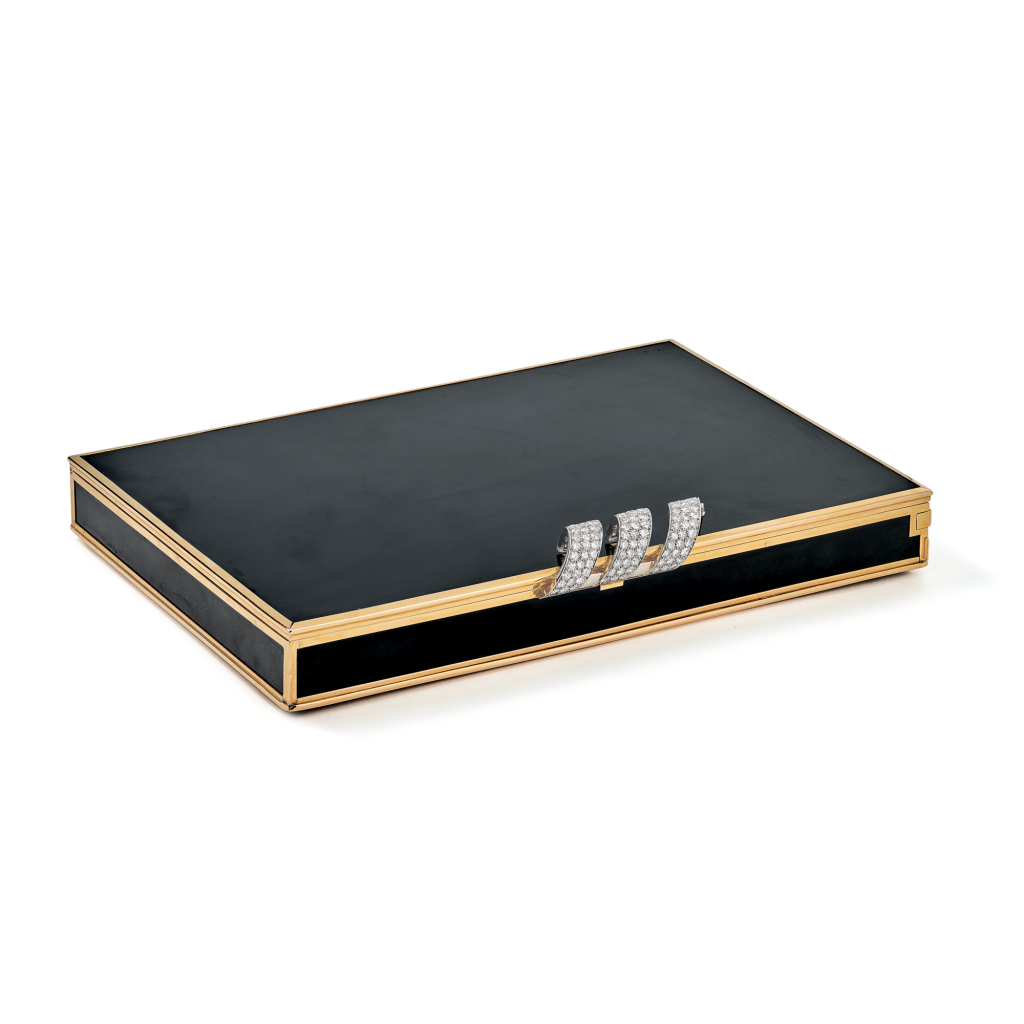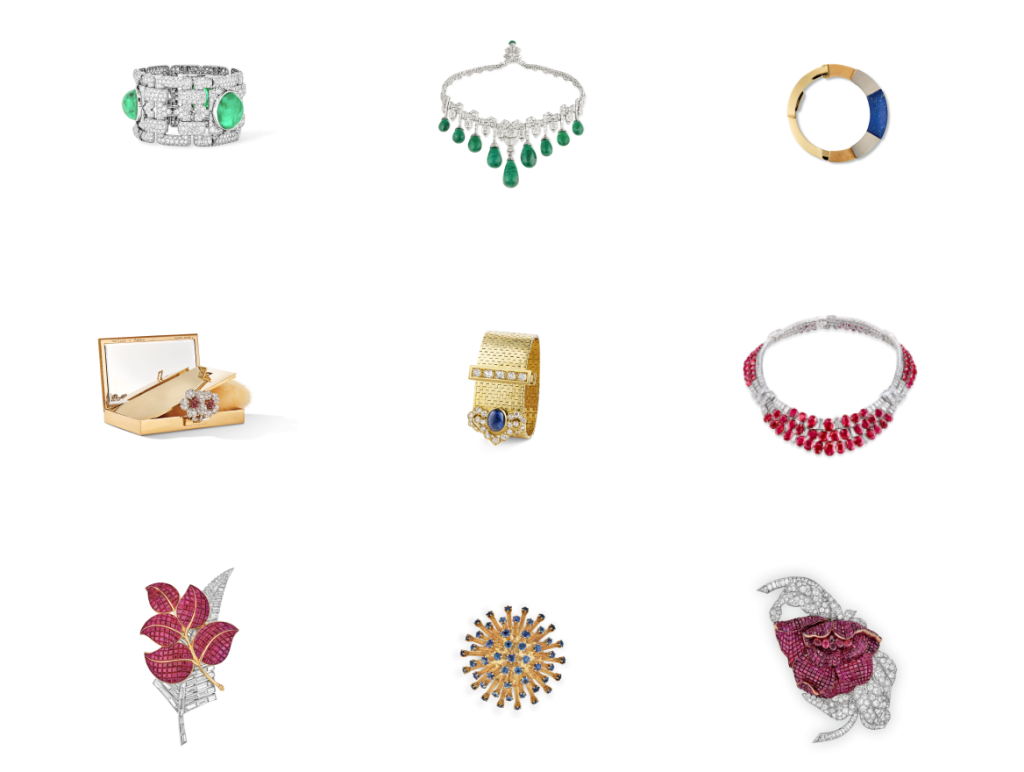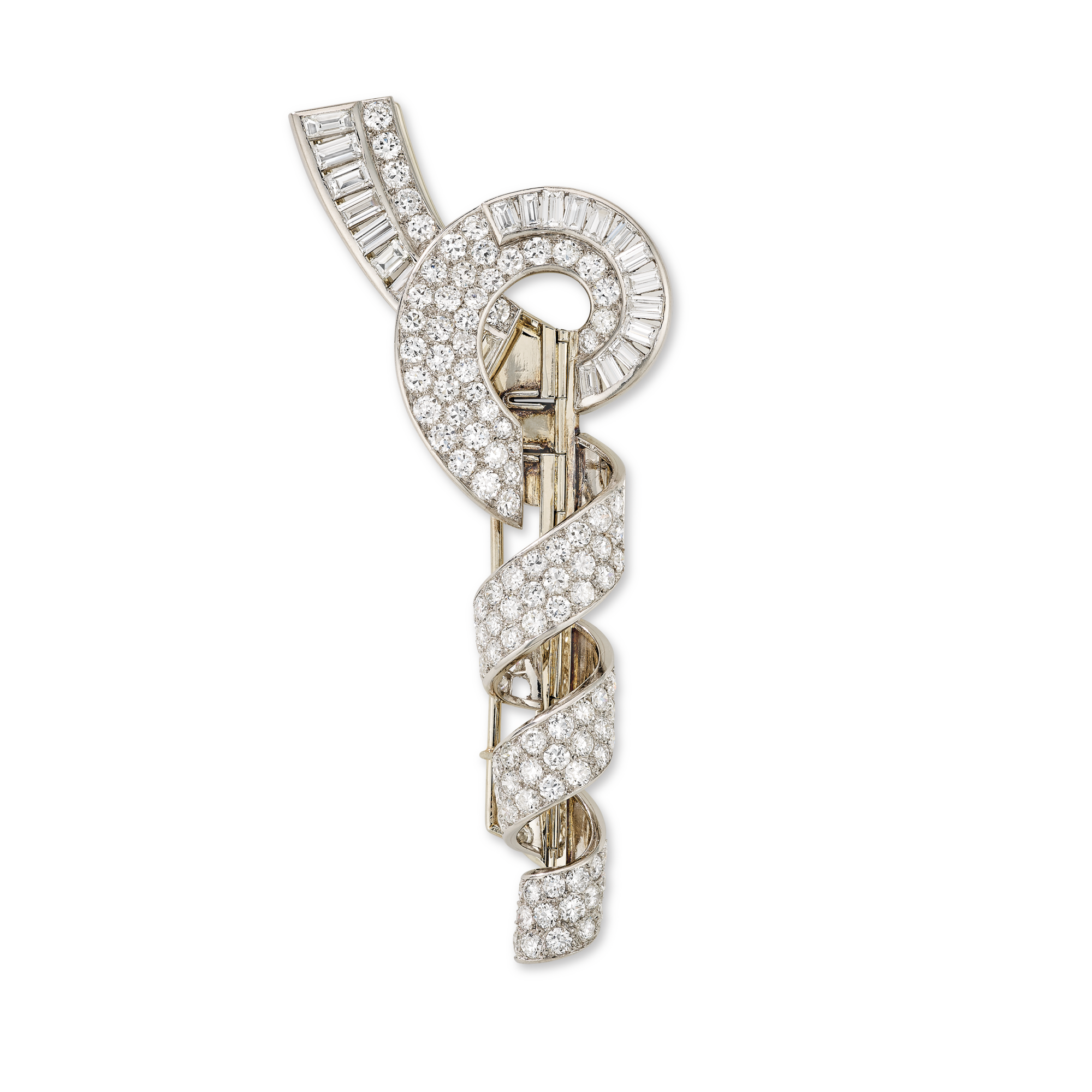
Copeau brooch
Creation details
- Creation year 1935
- Stone Diamond
- Material Gold
- Material Platinum
- Usage Clip
- Dimensions 87 × 36 mm
This brooch illustrates the experimentation with volume undertaken by jewelers in the 1930s, as it “imitates the natural spiral […] of a simple wood shaving curling back on itself”1Anonymous, “Tentations de Paris…,” Le Monde (July 23, 1953): n.p..
Its form consists of a platinum ribbon pave-set with brilliant-cut diamonds coiled around a fastening pin with a loop at one end, edged with a row of baguette-cut diamonds. Its pared-down design underlines its volume, particularly visible when the brooch is worn. When attached to a lapel or to the collar of a dress, the fastening system disappears behind the fabric. The “wood shaving” appears to blend with the fabric, becoming a platinum and diamond ornament that is as one with the garment.
Trompe-l’œil pieces
A photograph of Renée Puissant, the Maison’s artistic director at the time, provides a glimpse of the variety of ways of wearing a piece like the Copeau brooch. The brooch seen in the photograph appears without the end loop and is attached to the edge of Renée Puissant’s hat. Between 1934 and 1935, Van Cleef & Arpels created the Scroll and Tie clips, and the Spiral brooches—all wonderful trompe-l’œil pieces.
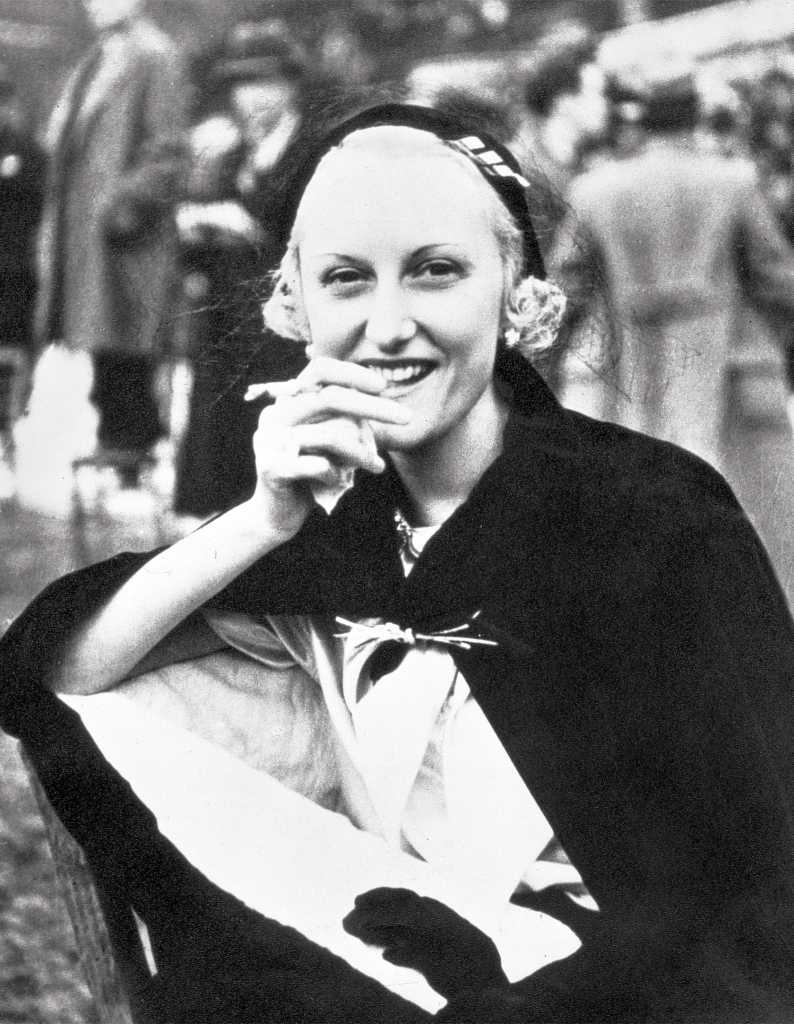
The collaboration with Pierre Sterlé
In addition to its ingenuity, this brooch shows the attention paid by Van Cleef & Arpels to those with innovative minds who were to mark the history of jewelry-making. Among them was Pierre Sterlé (1905–1978), designer of the Copeau brooch. After an apprenticeship in the workshops of the jewelers Magnier et Pinçon, Sterlé founded his own company as a “jewelry maker” in 1934, with the help of his draughtsman Alexandre Diringer. The Copeau brooch earned Sterlé the nickname “jewelry poet” from Édouard Herriot, then-president of the French Chamber of Deputies.2Anonymous, “Tentations de Paris…,” Le Monde (July 23, 1953): n.p.
To go deeper
